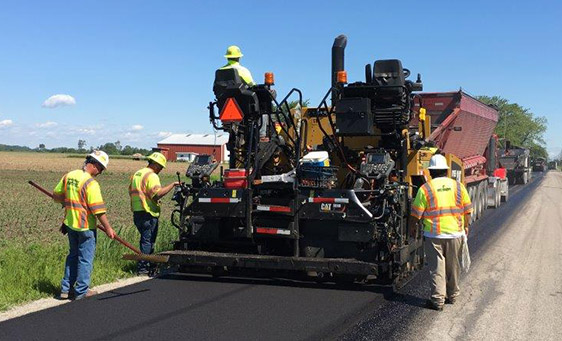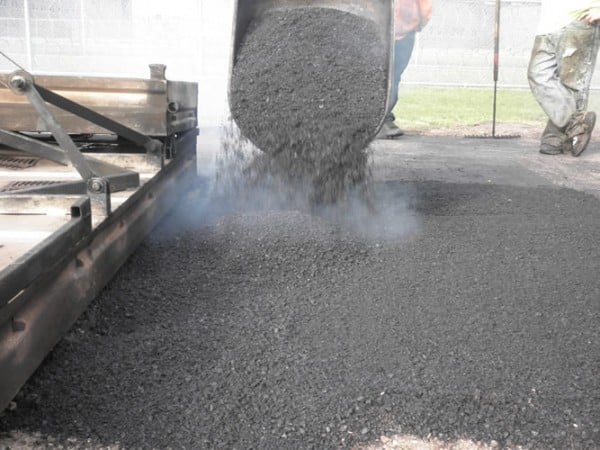Hot Mix Asphalt: The Foundation for Safe and Secure Angled Parking Lots
Unlocking the Tricks of Warm Mix Asphalt Technology
Checking out the midsts of warm mix asphalt modern technology reveals a world where accurate formulas and meticulous procedures assemble to form our roadways and framework. The fusion of fillers, binders, and aggregates isn't merely a building job yet a strategic orchestration of toughness and performance. As we peer into the complex dancing of components, a tapestry of durability and sustainability unravels. What exists below this surface of asphaltic proficiency, and what tricks wait to be revealed in the realm of leading advancements?
Value of Hot Mix Asphalt
Warm Mix Asphalt plays a vital role in modern-day infrastructure growth due to its longevity and cost-effectiveness. As the most generally used leading material for roadways, freeways, and auto parking lots, Warm Mix Asphalt offers a variety of benefits that add to its value in construction tasks. One key benefit is its ability to hold up against hefty traffic lots and harsh weather, offering a trustworthy and long-lasting surface area for transportation networks. In Addition, Hot Mix Asphalt is affordable in both first building and lasting maintenance, making it a preferred selection for many facilities jobs.
The resilience of Warm Mix Asphalt stems from its structure, which includes accumulations, binder, and filler materials that are carefully picked and mixed to fulfill certain performance needs. Generally, the importance of Warm Mix Asphalt in facilities growth can not be downplayed, as it continues to be a keystone of contemporary construction practices.
Elements of Asphalt Mixes
The composition of asphalt mixes includes very carefully selected aggregates, binder, and filler products that are critical for accomplishing particular efficiency requirements. Accumulations are the primary element of asphalt blends, offering toughness and stability. These aggregates can be all-natural, such as gravel or crushed rock, or synthetic, like recycled materials from old sidewalks. The binder, usually asphalt or asphalt cement, holds the aggregates with each other and provides adaptability and toughness to the mix. The selection of the binder is critical as it directly affects the mix's performance in various weather. Fillers, such as moisturized lime or Portland cement, are made use of to boost the mix's workability and aging resistance. Angled Parking.
The combination and proportion of these components play a considerable function in establishing the top quality and efficiency of the asphalt mix. Designers meticulously design the mix to meet specific requirements, thinking about elements like web traffic quantity, climate conditions, and pavement lifespan. Proper selection and balancing of aggregates, binder, and fillers are essential for creating resilient, lasting asphalt pavements.
Mixing and Production Techniques

Once the accumulations are chosen, the binder, usually asphalt cement, is included in bind the materials together. The binder's high quality and quantity substantially affect the mix's toughness, resistance, and adaptability to environmental elements. Additionally, fillers like hydrated lime or Rose city concrete might be integrated to improve particular qualities of the asphalt mix, such as its workability or moisture resistance.
During production, the accumulations and binder are warmed, commonly between 250-325 ° F(121-163 ° C ), to assist in blending and make sure proper layer of the accumulations. The mixing procedure needs to be detailed to accomplish an uniform blend that promotes the desired efficiency attributes of the asphalt. Different techniques, such as set mixing or drum blending, are utilized to achieve regular and top notch asphalt blends for building projects.
Variables Impacting Asphalt Efficiency
Variables influencing asphalt efficiency encompass an array of variables that impact the longevity, durability, and total quality of asphalt pavements. One crucial factor is the high quality of products used in the asphalt mix.

Style considerations, such as sidewalk density and drainage, are vital in making certain the lasting efficiency of the asphalt pavement. By thoroughly thinking find more information about these engineers, aspects and service providers can optimize asphalt performance and enhance the service life of pavements.
Sustainable Practices in Asphalt Innovation

WMA enables for the production and positioning of asphalt mixes at lower temperature levels contrasted to conventional hot-mix asphalt, resulting in lowered energy intake and greenhouse gas discharges. The usage of porous asphalt mixes can aid reduce stormwater drainage issues by permitting water to infiltrate with the pavement and into the ground, advertising natural water purification and recharge procedures.
Conclusion
Finally, hot mix asphalt innovation plays a crucial function in modern-day infrastructure advancement because of its longevity and cost-effectiveness. By thoroughly stabilizing parts, using correct blending strategies, and taking into consideration various aspects, designers can create top quality asphalt mixes that stand up to heavy traffic tons and extreme weather. Embracing lasting techniques, such as making use of warm-mix innovations and recycled materials, even more enhances the environmental kindness of asphalt modern webpage technology.
Mixing and production strategies in warm mix asphalt innovation include the precise mix and handling of aggregates, binder, and fillers to develop a sturdy and high-performance asphalt mix.Elements influencing asphalt performance encompass an array of variables that affect the toughness, durability, and overall quality of asphalt sidewalks. Sustainable practices in asphalt modern technology include various efforts aimed at lowering the ecological impact of asphalt manufacturing and paving processes. By incorporating recovered asphalt pavement (RAP) and check this recycled asphalt shingles (RAS) into brand-new asphalt blends, the market can dramatically decrease the intake of raw materials and power, while also decreasing land fill waste.
WMA enables for the manufacturing and placement of asphalt blends at reduced temperatures compared to conventional hot-mix asphalt, resulting in decreased power intake and greenhouse gas exhausts.